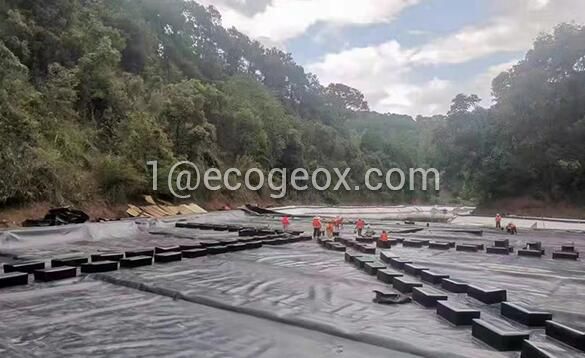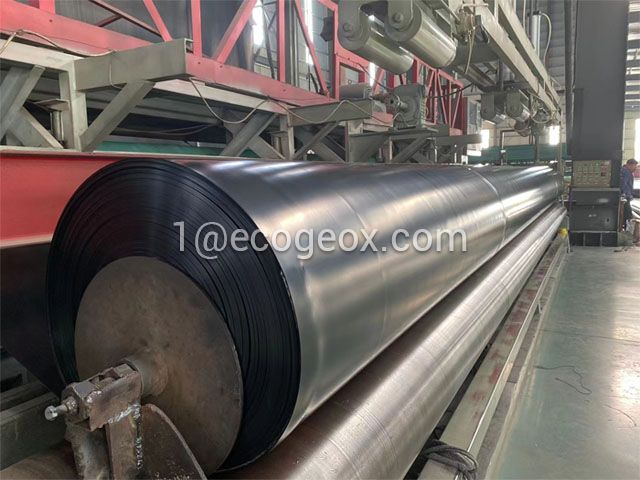5 Factors of Self-Installing Geomembranes for General Contractors
The demand for Geomembrane installation is increasing as the world grows more conscious of our environment and water resources. The installation process might look simple, but the reality is different. There are a lot of considerations that go into self-installing geomembranes, and this article will address them.

Should you opt for self-installation?
Geomembrane installation has been a leading solution for the containment of liquids and the prevention of effluent leaking into the soil. Its importance will only grow as environmental concerns mount, and the demand to contain hazardous material properly or to preserve water sources increases.
Many general contractors are now opting to self-install geomembrane for small to medium-sized projects as they consider self-installation to be more cost-effective. However, the process for geomembrane installation is complex, but it can be done when these five factors are given proper attention. While there are several factors to take into consideration, the process can be summarized into four main challenges and points of paramount importance.
Here are the five main factors of self-installation that you need to know as a general contractor.
1 – Expert consultation for the required geomembrane
The GC will acquire the geomembrane according to the project spec. But it’s not always a simple matter as the spec is very commonly outdated and the implication in damage to the project can be significant. Furthermore, there are many types of geomembrane lining materials available. Each choice is unique and suitable for different uses. For example, the Linear Low-Density Polyethylene (LLDPE) is resistant to chemicals and incredibly flexible under pressure and stress. On the other hand, High-Density Polyethylene is highly resistant to ozone and ultra-violet radiation.

2 – Geomembrane Sourcing
When it comes to materials, you might be tempted to purchase supplies from local distributors which is the standard procedure. However, this negates the entire purpose of self-installing geomembranes in the first place. Expenses will increase as you’ll have to bear the burden of distribution costs. Moreover, most local distributors will be limited in the variety and quantity of products they carry.
Hence for self-installation, the ideal is to buy directly from the geomembrane manufacturer. Not only will you be able to receive a customizable product that is best suited for your project but you’ll also be able to consult with geomembrane experts during every stage of the installation process. Regardless of your level of expertise in geomembrane installation, this consultation with the manufacturer is invaluable.
3 – Installation Training
There are two main methods of installation; Field Fabrication and Prefabrication liners. Field Fabrication requires extensive training as workers do the welding in difficult circumstances on site. Steep slopes and intense rainfall are common challenges workers often deal with regularly. Such cases demand more committed resources and manpower for safe execution, which might result in inflated costs.
Prefabricated geomembrane liners are pre-welded in the factory. Not only does this method drastically improve the quality of welds, but also makes the installation faster. Prefabricated liners are commonly preferred in many applications where experienced talent is scarce.
The latest technological advancements in the field have addressed most of them. Neither the geomembranes used today nor the production methodology is the same as it was a few years ago. Nowadays, factory-fabricated geomembranes can save a lot of time and associated costs.
4 – Training for Fabrication
Field fabrication of geomembranes is not a simple endeavor and can’t be mastered without proper training. There are a lot of factors and variables that may affect the results. This is one of the key reasons why many decision-makers still prefer to work with geomembrane installers rather than go for self-installation. The vast amount of experience they bring to the table can prove to be an asset in many complex cases and keep the process error-free.
For general contractors offering field fabrication services, arranging training for the workforce is necessary. Several trade associations provide training and recognized certificates for on-Field fabrication and installations. The International Association of Geosynthetic Installers one of the many recognized professional bodies dealing with fabrication training.
5 – Proper Heat Seal equipment
Installing geomembranes requires the usage of complex sealing equipment. That’s why many Heat seal equipment manufacturers also arrange on-site equipment training for employees. A seam that’s not sealed properly can burst under pressure and cause an expensive loss. Workers need certified professional training to work on the seams and to ensure that it’s leak-proof.
182
0
0

Comments
All Comments (0)